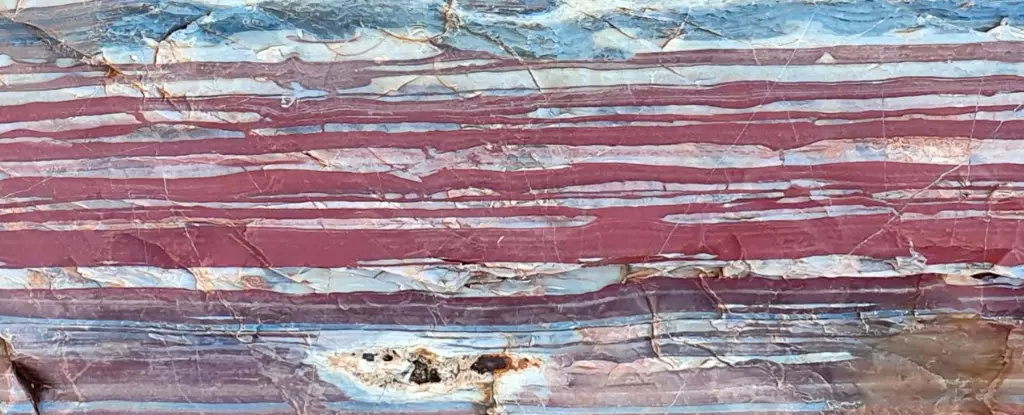In the depths of some of the oldest rocks on Earth, a remarkable discovery has been made. Buried within the 3.5-billion-year-old rocks of the Pilbara region in Western Australia are hidden nanocrystals that offer intriguing insights into the origins of life. Researchers from the University of Western Australia and the University of Cambridge have uncovered these previously overlooked minerals and their findings shed light on the emergence of key building blocks of life. By examining these ancient rocks under a transmission electron microscope, scientists have gained a glimpse into the remarkable world of prebiotic chemistry.
The Pilbara region of Western Australia is renowned for its unique preservation of the Earth’s crust during the Archean era. This era represents a pivotal time in Earth’s history when life was just beginning to take shape. The rocks found in this area act as a time capsule, offering valuable insights into the processes that set the stage for the emergence of life. At first glance, the Pilbara’s distinctive red rock appears to be a mixture of quartz and hematite, known as jaspilite. However, upon closer inspection, hidden treasures are revealed – nanocrystals with remarkable properties.
Dispersed throughout the jasper beds in the Pilbara rocks are fine particles of greenalite. This mineral, composed of iron, silicon, and oxygen, provides a crucial clue to understanding the early stages of life. What makes greenalite so fascinating is its unique structure at the nanoscale. The misalignment between the iron-rich octahedral layers and the silica-rich tetrahedral layers results in corrugated particle edges. These grooves, precisely sized for RNA and DNA, serve as catalysts for aligning the components of biomolecules. Greenalite nanoparticles acted as assembly lines, allowing the biomolecules to easily click together. This discovery raises the possibility that hydrothermal vents on the seafloor, where these rocks were formed, played a crucial role in facilitating the formation of complex biomolecules.
Declared as potential birthplaces of life, hydrothermal vents serve as dynamic crucibles for chemical reactions. The constant churning of seawater through magma chambers and the release of hot, nutrient-rich plumes form the ideal conditions for the emergence of life. Birger Rasmussen, a geologist at the University of Western Australia, explains that the extreme gradients within these vent systems create an environment conducive to chemical reactions. Such reactions may have given rise to trillions of microscopic clay particles, including greenalite, which acted as catalysts for aligning RNA and pre-RNA components. The hydrothermal vent systems of billions of years ago may have been bustling hubs of biochemical activity, setting the stage for the early evolution of life on Earth.
Phosphorus has long puzzled scientists due to its abundance in biological structures, despite its scarcity in today’s oceans. The researchers’ examination of the Pilbara rocks also revealed the presence of nanoparticles of fluorapatite – a mineral rich in phosphorus. This discovery provides a potential explanation for the paradox of phosphorus’s prevalence. The modeling conducted by the scientists suggests that the concentration of phosphorus in deep seawater billions of years ago was considerably higher than it is today. The hydrothermal vents, once again, emerge as a likely source of accessible phosphorus. These vents may have served as the vital wellspring for the molecular building blocks of life, including DNA, membranes, and lipids.
The discovery of the hidden nanocrystals within the ancient rocks of the Pilbara region offers a remarkable window into the origins of life. Through the examination of greenalite and fluorapatite nanoparticles, scientists have gained insights into the pivotal role that hydrothermal vents played in the emergence of life. These vents, with their unique combination of extreme gradients and nutrient-rich plumes, served as ideal environments for the formation of complex biomolecules. The findings challenge our understanding of the early stages of life on Earth and open up new avenues for further exploration. As we continue to unravel the secrets of our planet’s distant past, we come closer to understanding the fundamental processes that led to the incredible diversity of life that exists today.


Leave a Reply